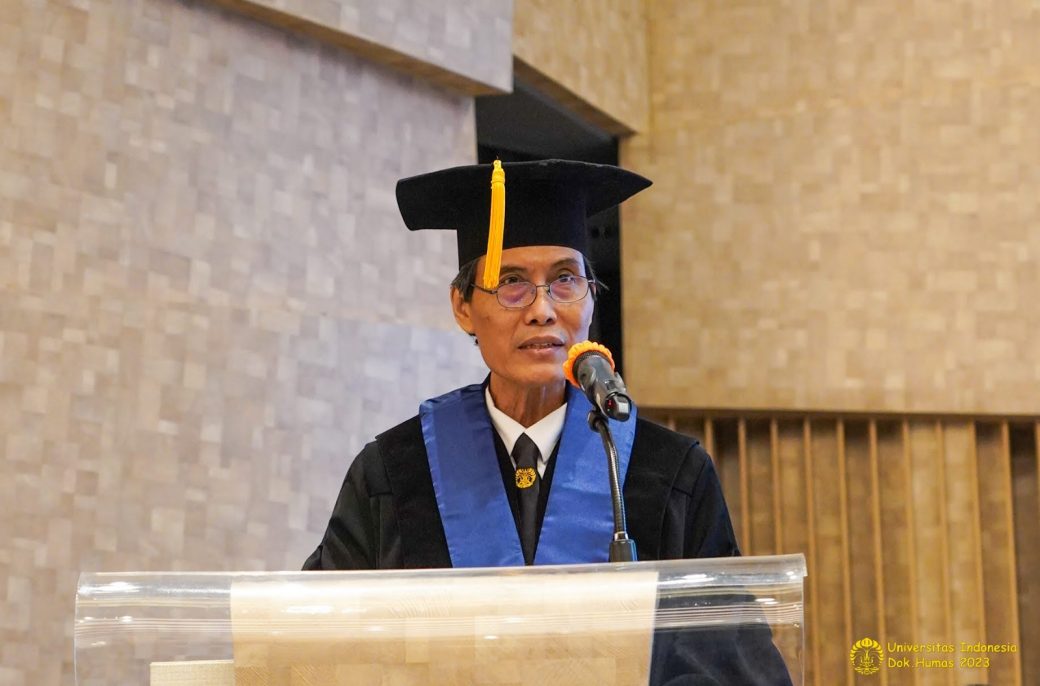In his speech at his professorial inauguration last Wednesday (5/7), Prof. Dr. Ir. Dijan Supramono, M.Sc., discussed the findings of his research on the sustainable production of chemical materials through the pyrolysis of biomass. Prof. Dijan explained that biomass waste from the agriculture and forestry industries is a source of biomass that may be used as a source of useful chemicals and a sustainable energy source during a presentation at the Makara Art Centre (MAC) UI Depok Campus.
Indonesia is a country that produces a lot of solid biomass waste that can be utilised, such as the production of solid waste from palm oil plantations of 182 million tonnes per year, rice production of 65.5 million tonnes per year, and corn production of 18.8 million tonnes per year. Biomass contains three main fractions, namely cellulose, hemicellulose, and lignin, and each fraction contains polymer compounds.
Prof. Dijan said that the utilisation of the three components of biomass into useful chemical materials would be more efficient if the three were separated first because they contain monomers with different types of compounds. To utilise these three fractions, fractionation is required with moderate reaction conditions. One type of fractionation that is becoming widely used is organosolv fractionation, which uses organic solvents and an acid catalyst at temperatures below 200°C to produce solid cellulose, solid lignin, and xylose monomers from hemicellulose.
To target certain products, avoid the formation of by-products, and increase the production of bio-oil, the pyrolysis process must be equipped with a catalyst (catalytic pyrolysis) and carried out with a fast reaction time (fast pyrolysis), or a combination of both. With fast catalytic pyrolysis, cellulose, hemicellulose, and lignin can be converted into the platform chemicals hydroxymethyl furfural, furfural, and phenolic, respectively.
Therefore, the pyrolysis process is an intermediate process to convert non-value solid biomass polymer materials into monomers, which can then be converted into valuable chemicals that can be utilised by humans. In addition to converting biomass materials into bio-oil, which is used as a chemical platform, the pyrolysis process is also capable of converting biomass into char (charcoal) at low heating rates and into gas. Char can be used as feed in gasification, as fuel, and as activated carbon, while gas can be used as fuel.
Prof. Dijan was appointed a Permanent Professor in Chemical Engineering at the Faculty of Engineering, Universitas Indonesia (FTUI), thanks to his research on “Pyrolysis Technology for the Advancement of Biomass-Based Chemical Industry”. Universitas Indonesia’s Rector, Prof. Ari Kuncoro, S.E., M.A., Ph.D., led the inauguration procession directly and was virtually aired on UI TV and YouTube.
Prof. Dijan graduated from the Bandung Institute of Technology (ITB) in 1984 with a degree in undergraduate studies. He then completed his schooling at the University of Manchester Institute of Science and Technology (UMIST), where he eventually received his diploma in 1991. Additionally, he was successful in earning his doctorate from UI in Chemical Engineering in 2019.
Several of his scientific works in the last three years include: Moderate hydrogen pressures in the hydrogenation of alkenes using a reactor with a hydrogen gas self-inducing impeller (2022); the effect of heating rate on oil yield and composition in co-pyrolysis of polypropylene and triglycerides from refined palm oil using ZrO2.Al2O3.TiO2 catalyst (2022); the economic potential of the Manufacture of Acrolein and Propylene Glycol from Glycerol (2021); Effect of Impeller Rotational Speed on Biofuel Characteristics in Non-Oxygenated Bio-oil Hydrogenation Reaction using a Gas Self-Inducing Impeller (2021); and Co-pyrolysis of Crude Palm Oil and Polypropylene in a Stirred Tank Reactor to Produce Non-Oxygenated Bio-oil (2021).
***
Bureau of Public Communications
Faculty of Engineering, Universitas Indonesia

